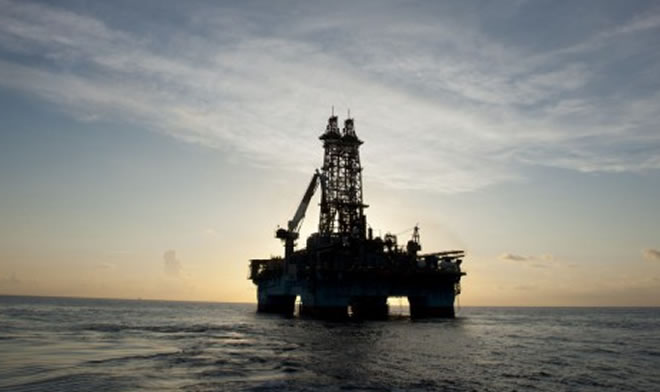
By Viktor Katona for Oilprice.com
Friday July 24, 2020

Somalia’s government has announced that it would hold its first-ever offshore licensing round this August, marking the starting point of Africa’s perhaps most adventurous oil frontiers. Still recovering from the disastrous consequences of the Civil War, Somalia currently produces no oil whatsoever and has no exploratory activity taking place. This does not hold back the federal government from dreaming big and claiming that Somalia might be Africa’s last passive giant frontier. Somalia has heretofore seen only 2 offshore wells and neither of them was drilled in deep water, hence the authorities are fully entitled to promote their offshore as an untapped bounty waiting to be discovered. Were Somalia to be the last gem of Africa, could it really handle such a windfall?
The federal government of Somalia, active since 2012 after almost 30 years of sanguinary civil war, will offer 7 blocks within the 1st Offshore Licensing Round (blocks 152, 153, 164, 165, 177, 178 and 204). This is less than half of what the Somali government initially wanted to put on offer – the price plunge and across-the-board CAPEX cuts have curbed the investing appetite of international majors, hence the modified offer. It was assumed that the totality of 15 blocks that Somalia intended to license out to oil companies had a resource potential of some 30 BBls, based on seismic testing done by the Norwegian geophysical company TGS. The Jurassic separation of Somalia and the Madagascar-Seychelles-India block has seemingly created oil-prolific deposits that share many characteristics with the Ogaden Basin and partially also the Rovuma Basin.
Despite harboring aspirations to join the East African exploration drive for quite some time, Somalia did not have petroleum legislature regulating the industry up until February 2020. By ratifying the new Petroleum Law, the fully state-owned Somali National Oil Company (SONOC) was created to spearhead the launch of production and the Somali Petroleum Authority (SPA) was established to oversee the process from a regulatory point of view. Somalia has opted for flexible upstream terms, whereby the royalty rate would fluctuate between 5% and 35% depending on the price of oil, along with a profitability-based profit-sharing scheme. On paper the suggested fiscal terms look reasonable, the question is whether they would stay the same if yet another political crisis compels the federal government to generate cash out of somewhere.
Somalia has one of the most contorted historical legacies to overcome, not to speak of unsettled maritime border disputes with neighboring countries, primarily Kenya. Oil exploration in today’s Somalia has started in the 1950s, with companies like Sinclair, AGIP (now ENI) spudding wells in British Somaliland, with the overwhelming majority of wells drilled onshore. It seemed that first drilling results delivered promising results yet they did not materialize into commercial projects, therefore then-majors have continued assessing potential deposits in the 1960s, moving towards the tip of the Horn of Africa. Sinclair’s Agfoi gas discovery, located near the capital of Mogadishu was the pinnacle of the initial exploration drive. Agfoi, however, turned out to be another commercial failure as the field never went further than being a mere prospect.
Just as international majors, spearheaded by Shell around the Mogadishu are and ENI around the tip of the Horn of Africa, started to try their luck with Somalia’s offshore in the 1980s, the onset of the civil war forced everyone to evacuate and effectively freeze Somalia’s oil prospects. Interestingly, the Somali government has reached out to majors that were active in its offshore – in March this year it has even signed a preliminary road map with Shell and ExxonMobil on their return, claiming that they are entitled to continue assessing their respective pre-1991 concessions. For this to happen, Exxon and Shell have paid $1.7 million owed to Mogadishu for the lease of their offshore concessions.
Choosing only 7 concessions for the 1st Offshore Licensing Round is a politically wise move, as not everyone is satisfied with the prospect of Somalia producing oil. First among them is Kenya which still has an unsettled maritime border dispute with Somalia – none of the blocks on the offer are within the disputed territory yet Mogadishu might still have to wait for the final decision of the International Court of Justice (referred to ICJ in 2014). As it happens, a decision favorable to Somalia would deal a double blow to Kenya’s upstream plans – as opposed to Somalia it has offered out acreages in the disputed zone. Total has already relinquished Block 22, partially located in the disputed area, so now the Italian ENI remains the only international major with disputed acreage.
Where does this leave Somalia’s offshore future? Between a rock and a hard place, that is certain. Although the federal government has passed legislation on revenue-splitting with its regions (states), the percentage that the government would keep is still unsettled, leaving ample space for regional surges of discontent. Moreover, despite providing attractive fiscal terms there remains little confidence that in a country that for decades embodied the term “failed state” the federal authorities could uphold a rule of law adequate enough to keep the oil contracts intact. Somalia has taken several good steps towards creating a sustainable oil and gas framework yet the fragility of the Somalian state and concerns about it falling back into a ceaseless battle royale loom large over its long-term prospects.